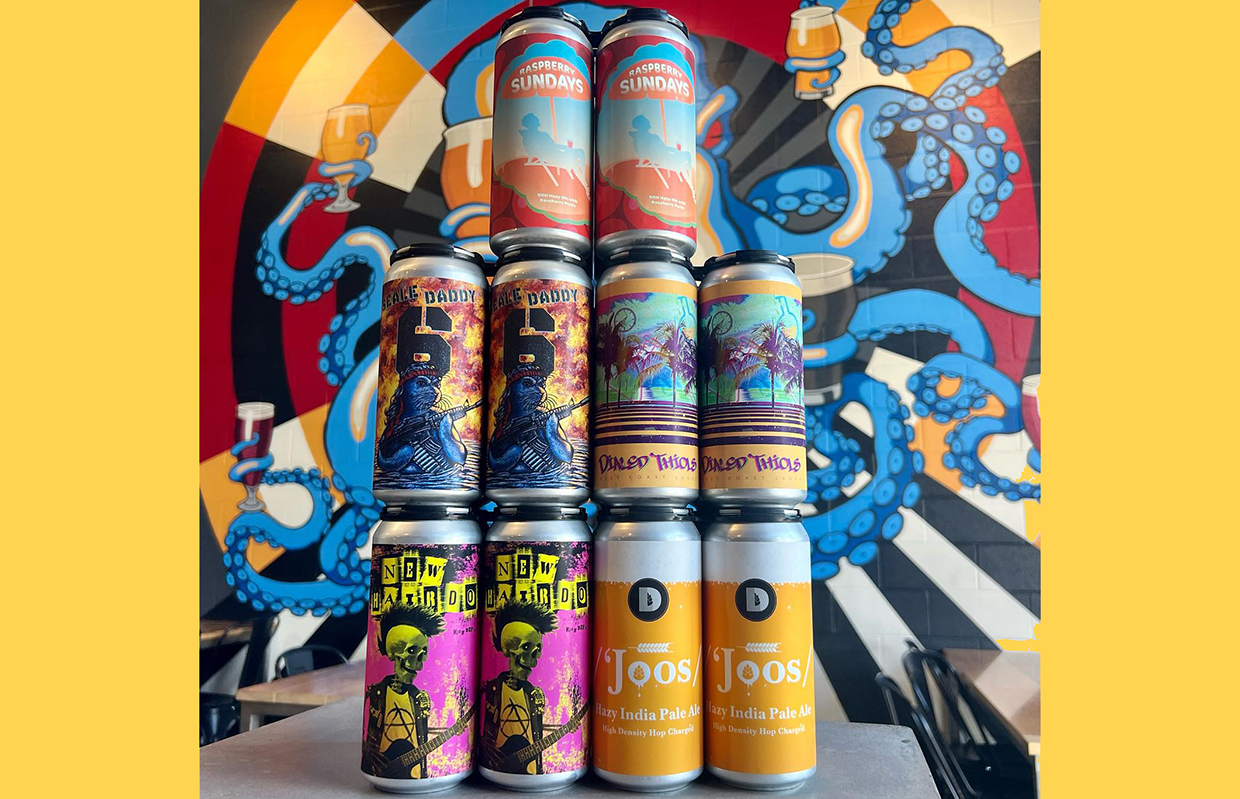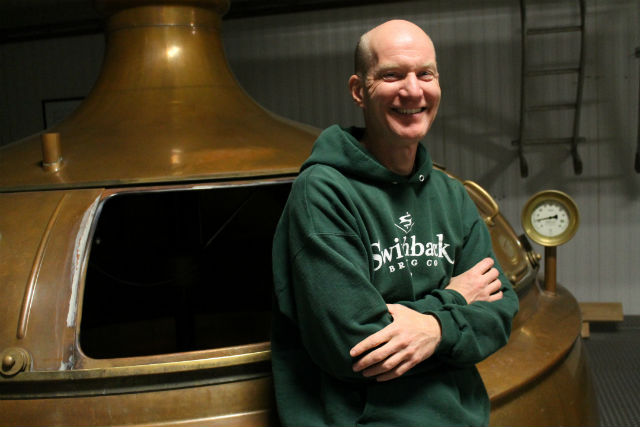
On a five-barrel system, Dot & Line Brewing features three 10-barrel fermenters with two five-barrel fermentor mentors and a 10-barrel brite, which gives founder and brewer Phil Comparet the flexibly to overhaul the eight taps at the Fort Wayne, Indiana tasting room quickly.
“So about every 5-6 weeks, we’re having to go okay, we need eight more beers,” he said in a sitdown conversation along with Taproom Manager Adam Barnes. “That means it’s time to order the next shipment (of ingredients).”
Being able to move quickly like that means integrating sales numbers along with consumer input to adjust ideas on the fly.
Being open to new ideas, and not being afraid of trying something and having it fail is something he has learned over the past three years of being in business.
“I wouldn’t even call it a failure,” Comparet said. “How do you define that level of success? How long should it be on tap? How fast does it need to move to be able to say, ‘Okay, we’re gonna bring that back again,’ and ‘Was that successful enough.’
“That, I think is the toughest part about this is finding those beers that are still moving through the taproom quick enough. It’s a balance, you’ve got to kind of feel it out.”
Dot & Line was birthed out of a local printing company that Comparet worked at while at the same time getting into home brewing more. It eventually led to the look and feel of the brewery that is opened next to the print shop and loaded with great-looking graphics for its beers. But, none of the brands in the lineup are true flagships. Even brands that they thought would be on all the time, like its Hazy IPA Joos, aren’t always there anymore. But it doesn’t deter much, Comparet noted.
READ MORE: Important Marketing Aspects to Remember in Label Debut
“I don’t think a brewery this size really fits that old six beer/flagship mold,” he said. “That was such a common thing through the early 2000s and up to a few years ago.
“We’ve had a couple beers, like our Cream Ale and Joos has been our our main hazy IPA. I don’t know why we call them flagships because Joos has changed over time. And even now we’re not going to have that on full-time anymore. We’re gonna bring it back. But we think we’ve brewed better IPAs now.”
Although there’s not a true “right answer,” Comparet doesn’t think that’s the formula anymore.
“I think the goal, at least originally when this whole concept came together, was just solely to brew the best beer with the best ingredients we can,” he said. “Obviously, that’s very vague, but that was kind of the general overarching theme, from the printing side was always to have the cleanest facility they could, always put out the best product, and always give the customer 110% of your effort to deliver the best product that we could.
“Personally from a brewing standpoint, I’m always tweaking and trying to find a little bit better process to improve that thing, whether it’s 1, 2, 3, 5, or 10%. I’m not just going to sit around and go: ‘This has been fine. I’m just going to keep doing the same thing over and over and over for the next 10-15 years.’ I want that kind of constant improvement of always looking for something slightly better. Any little tweaks, any little process changes that we can make that will make this a better place.”
In an area like Northeast Indiana and a metro population of around 400,000 people, Barnes said they are still introducing themselves daily to new consumers that come in the door or find them online. Being able to offer variety can be a key to repeat sales, he believes. Continuing to change up the malt bill on something or always looking to try new things matters.
“You’re not just throwing the same 12 beers up all the time,” Barnes said. “Our tap list is always rotating and something might come back twice a year, but you’re not ever going to come in here, unless you’re coming every day, and the tap list is going to be the exact same.
“A lot of things are probably gonna be different.”




Be the first to comment